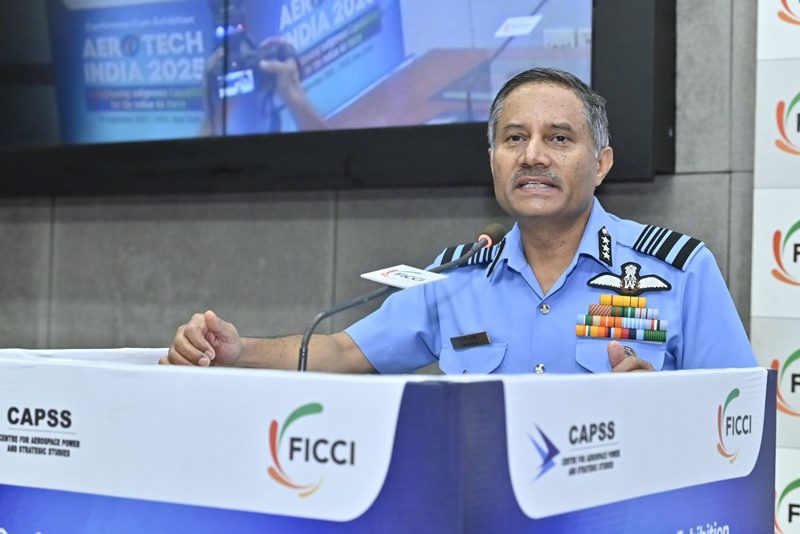As future warfare evolves into a collaboration between humans and machines, Air Marshal Bharti emphasised that each phase will demand distinct indigenous capabilities.
Deputy Chief of the Air Staff, Air Marshal Awadhesh Kumar Bharti, has called on Indian industry and policymakers to achieve 100 per cent indigenisation within defined timelines, warning that even 99 per cent domestic content is inadequate if critical components remain import-dependent.
“If the supplies of those critical components are choked, we will not be able to ramp up production when needed,” Bharti said, addressing Aero Tech India 2025, organised by the industry chamber FICCI in partnership with the Centre for Aerospace Power Studies (CAPSS).
He urged stakeholders to accelerate innovation timelines, stating, “We need to put our innovation on afterburner. This cruise setting will not do.” He criticised delays in transitioning from conceptualisation to operationalisation, and presented a detailed framework for future conflict preparedness.
Bharti emphasised that future wars will not be won by strength alone, but by nations that innovate faster, integrate better, and achieve self-reliance. His analysis divided future warfare into distinct phases, each demanding specific indigenous capabilities.
In the pre-kinetic phase, he called for “persistent, survivable intelligence, surveillance, reconnaissance (ISR) capabilities” operating in a highly informatised environment. This includes AI-driven real-time data analysis engines, quantum-resilient communications such as software-defined radios and blockchain protocols, and integrated sensors across ground, airborne, and space-based platforms.
He specifically highlighted the need for more airborne warning and control system (AWACS) aircraft, enhanced radars on fighters and unmanned aerial vehicles, and radio frequency (RF) sensors in lower frequency bands alongside electro-optical and infrared systems.
Demands of Full-Spectrum Warfare
For kinetic operations, the Air Force envisions full-spectrum warfare, from low-cost drones to high-precision systems employing sixth-generation technologies and man-unmanned teaming.
“Future warfare will be about collaboration between humans and machines,” Bharti said. “Robots and autonomous systems integrated with AI would be fighting side by side with humans.”
He identified weapon seeker technology as the most critical gap in India’s defence ecosystem. “Considerable effort is being put into developing various kinds of weapons, but very few of us are looking at seeker technology,” he noted.
Bharti urged manufacturers to invest in quantum computing for secure communications, scramjet engines for hypersonic missiles, core aero engine technologies for fighters and transport aircraft, directed energy weapons, and counter-drone systems.
He also cautioned that the unmanned aerial systems space is becoming congested, and advised entrepreneurs to focus on enhancing platform capabilities, survivability, and sensor integration.


